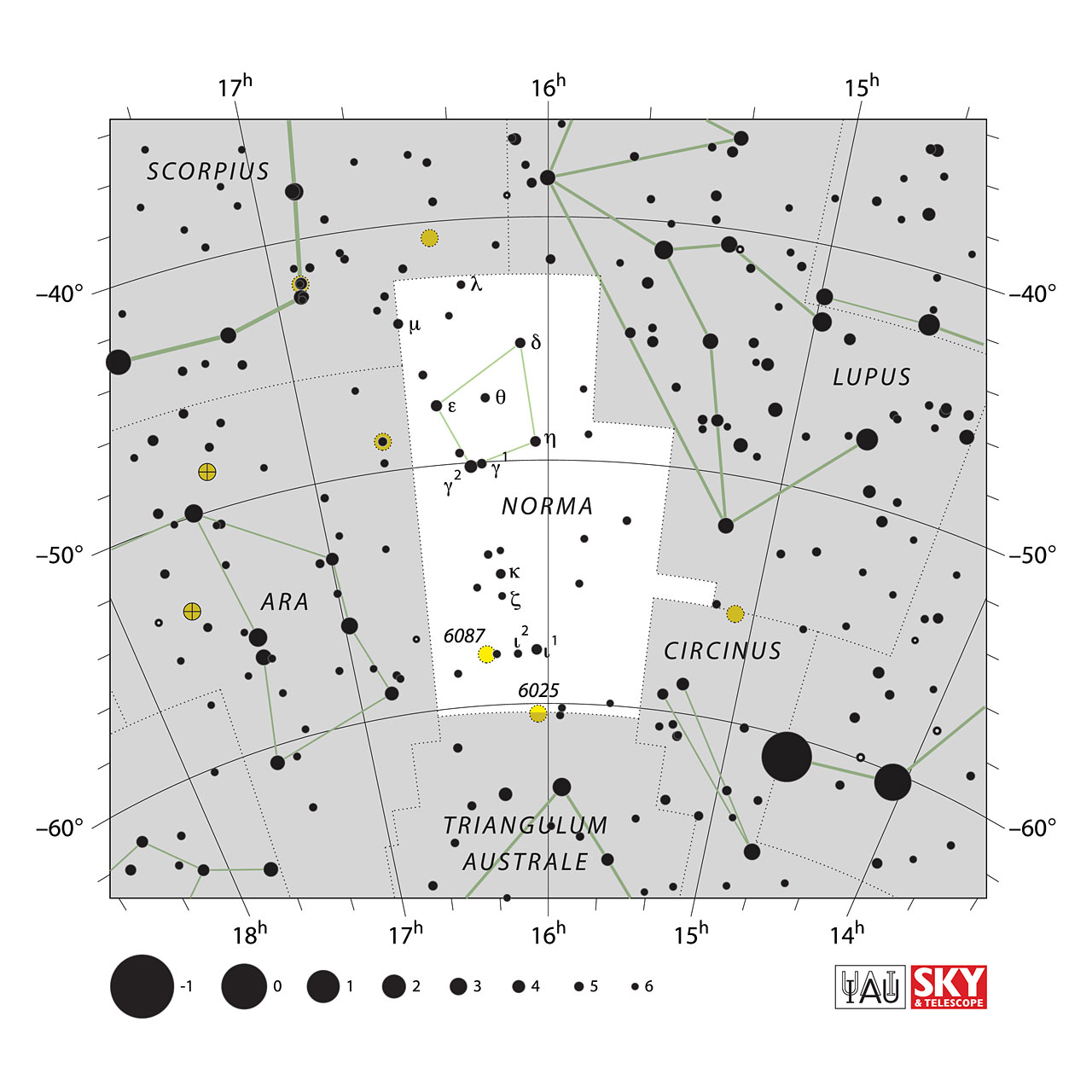Norma


Norma is a small and faint southern constellation, which appears highest in the evening sky in the months around May.
It was created by Nicolas Louis de Lacaille in 1756 from a dark patch of sky between Lupus and Ara, and represents a set-square and rule. Originally called ‘l’Equerre et la Regle’, its name was Latinised and abbreviated to Norma in 1763. It is one of several depicting scientific instruments. Its name is Latin for normal, referring to a right angle, and is variously considered to represent a rule, a carpenter’s square, a set square or a level.
Norma lacks any stars brighter than fourth magnitude, but lies close to the plane of the Milky Way and offers the deep sky observer a rich array of open star clusters.
Its brightest star is designated γ²-Nor; although Lacaille created a full set of Bayer letter designations for its stars, he originally envisaged a much larger constellation and the stars he denoted α and β now lie within the modern constellation of Scorpius, where they are now designated N-Sco and H-Sco.
In India Normal is called ಚತುಷ್ಕ (Chathushka).
Norma contains:
-
Stars
- γ²-Nor (mag 4.0)
- ε-Nor (mag 4.5)
- η-Nor (mag 4.7)
- ι¹-Nor (mag 4.7)
- δ-Nor (mag 4.7)
- μ-Nor (mag 4.9)
- κ-Nor (mag 5.0)
- γ¹-Nor (mag 5.0)
- θ-Nor (mag 5.1)
- HD 147152 (mag 5.3)
- QU Nor (mag 5.4)
- HD 139129 (mag 5.4)
- λ-Nor (mag 5.4)
- HD 146003 (mag 5.5)
- ι²-Nor (mag 5.6)
- HD 145782 (mag 5.6)
- HD 147977 (mag 5.7)
- HD 146690 (mag 5.8)
- HD 141168 (mag 5.8)
- HD 141318 (mag 5.8)
- ζ-Nor (mag 5.8)
- HD 141194 (mag 5.8)
- HD 142049 (mag 5.9)
- HD 147225 (mag 5.9)
- HD 139211 (mag 5.9)
-
Open Clusters
-
Globular Clusters
- NGC 5946 (mag 8.4)
-
Galaxy
- None
View Norma in 3D 
Source: Wikipedia, in-the-sky.org
Image Courtesy: Sky&Telescope & IAU, Illustration Images linked from Urania's Mirror on Wikmedia Commons by Sidney Hall
Image Courtesy: Sky&Telescope & IAU, Illustration Images linked from Urania's Mirror on Wikmedia Commons by Sidney Hall
